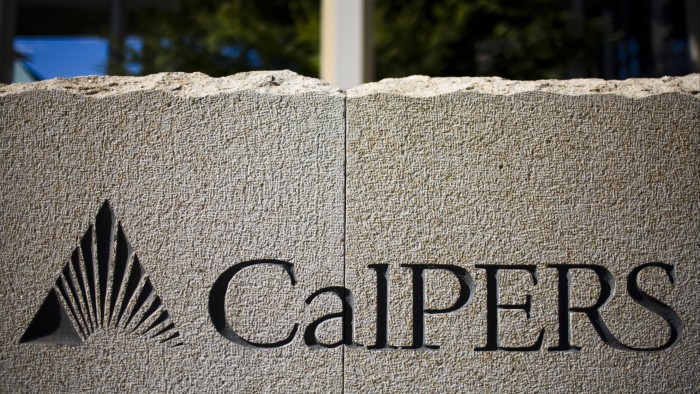Unlock the Editor’s Digest for free
Roula Khalaf, Editor of the FT, selects her favourite stories in this weekly newsletter.
Calpers, the largest public pension fund in the US, has signalled an appetite for more exposure to private equity despite concerns that these assets could expose retirees to too much risk.
Stephen Gilmore, chief investment officer of the California Public Employees’ Retirement System, said it was “reasonable to expect our private equity exposure will continue to increase somewhat”.
Despite concerns about lower than expected returns from some managers and the reliability of private valuations, Calpers has already boosted its allocation to private equity and overhauled its investment strategy.
“We’ve proved our manager selection and we’ve also increased the share of co-investment,” said Gilmore said. These co-investments were often “no fee” and did not come with shared profit payments to managers, known as carried interest, he added.
He said the fund’s scale and the long-term nature of its investments made it an attractive partner for the best private equity firms.
Gilmore’s comments come as Calpers reported an 11.6 per cent gain for its latest fiscal year, its strongest performance for four years, bringing total managed assets to $556.2bn.
It improved its estimated ability to pay its retirees in full, known as the funding ratio, from 75 per cent to 79 per cent over the year to 30 June.
In March last year, Calpers increased its target private equity allocation from 13 per cent to 17 per cent.
Calpers’ push into the asset class comes as some other investors, such as the Teachers Retirement System of Texas, lowered their target allocation to private equity last year. The average allocation to unlisted companies among US public pension funds is about 10 per cent, according to the National Conference on Public Employee Retirement Systems trade association.
Private equity investors around the world have come under pressure after a decade of low interest rates. Money paid back from funds has been lower than expected, raising questions over whether private company valuations are accurate until the stake is sold.
According to Bain & Company’s Global Private Equity Report, distributions as a percentage of net asset value fell from an average of 29 per cent in the period from 2014 to 2017 to only 11 per cent in 2024.
Some former board members of Calpers — including Margaret Brown, now president of non-profit group Retired Public Employees’ Association of California — are concerned that the managers could be taking too much risk with their private equity push.
“I have grave concerns that Calpers plans to double down on private equity. It’s far too much risk for a public pension fund that millions of retirees depend on,” Brown said.
Calpers private equity portfolio, which makes up close to 18 per cent of the fund, delivered a return of 14.3 per cent, up from 10.9 per cent the previous year and a loss of more than 2 per cent the year before.
The fund said an overhaul of its private equity strategy in 2022 had led to a 10 per cent reduction in management fees in recent years.
However, its public equity investments, which make up 39 per cent of the fund, outperformed all other asset classes with a 16.8 per cent return.
Gilmore joined Calpers as chief investment officer from New Zealand’s sovereign wealth fund last year, after and unstable period for the Californian scheme following the resignations of Ben Meng in 2020 and Nicole Musicco in 2023.
Calpers chief executive Marcie Frost said private equity was “an asset class we have conviction in and we think it will outperform the public markets over the long term, and why shouldn’t our members have access to those outsized returns?”
https://www.ft.com/content/ca30fa31-5d6d-469b-99d1-dbf3733d0da4


